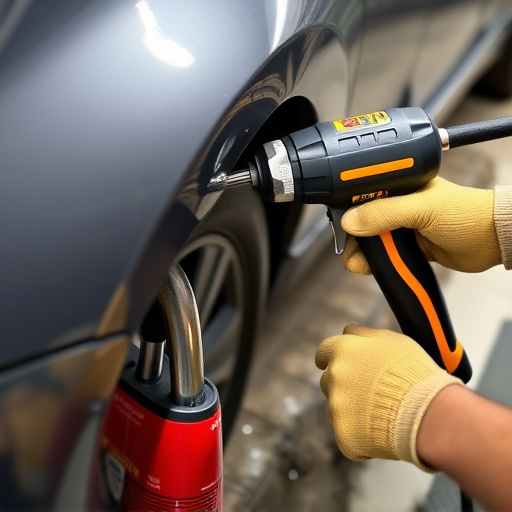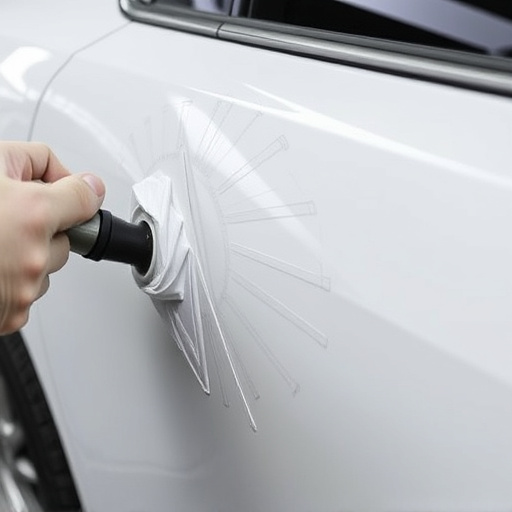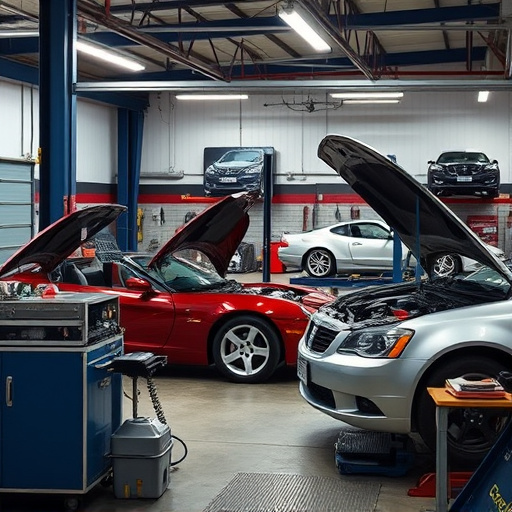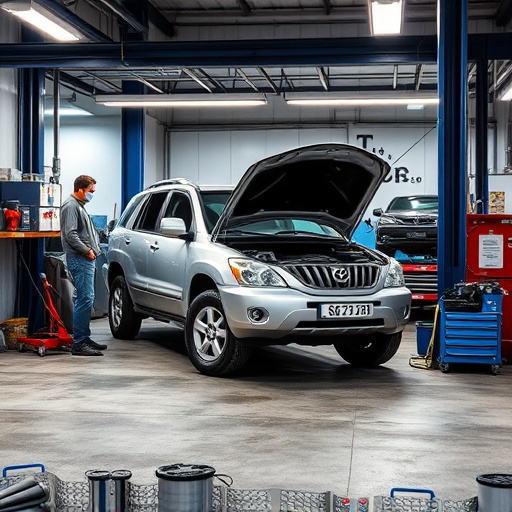Tesla's body computer reset mechanisms ensure vehicle safety and performance during software updates and power loss events. Manual resets are easy to perform, resolving issues like post-update glitches or minor accidents. Regular firmware updates, factory resets after critical events, and specialized auto body shop repairs help maintain optimal Tesla performance and value.
“Experience a sudden loss of functionality in your Tesla after an update or power outage? This is not uncommon, as Tesla’s advanced ‘body computer’ requires periodic resets. This article demystifies the process, offering insights into Tesla’s reset mechanisms and practical steps for manual resets. We delve into the prevalence of post-update or power loss issues and present solutions to ensure your Tesla returns to optimal performance, keeping you informed and in control.”
- Understanding Tesla's Body Computer Reset Mechanisms
- Steps to Perform a Manual Reset on Your Tesla
- Prevalence and Solutions for Post-Update or Power Loss Issues
Understanding Tesla's Body Computer Reset Mechanisms

Tesla’s body computer reset mechanisms are designed to address potential issues that may arise from software updates or power loss events. These sophisticated systems are integral to ensuring the vehicle’s safety and performance. When a Tesla undergoes an update, various control units within the car communicate with each other to synchronize data and ensure all systems are functioning optimally. Any disruptions during this process can trigger a reset, aiming to maintain system integrity.
Similarly, power loss incidents, such as sudden stops or battery-related issues, might initiate a body computer reset. This mechanism is akin to a safety net, designed to prevent potential harm caused by faulty software or hardware. Following a reset, Tesla’s onboard diagnostics will identify and address any anomalies, ensuring the vehicle is returned to its optimal operating condition. For instance, a collision repair center specializing in Mercedes Benz repairs might encounter such scenarios, highlighting the importance of understanding these reset processes for effective vehicle maintenance.
Steps to Perform a Manual Reset on Your Tesla

Performing a manual reset on your Tesla is a straightforward process that can help resolve various issues after an update or power loss. Here’s how to do it:
1. Power Off and Re-connect: Start by turning off your Tesla completely. This can be done either through the vehicle’s dashboard or by unplugging the charging cable if it was previously connected. Once powered off, wait for a few moments to allow the body computer to reset itself. Afterward, reconnect the charging cable or turn on the ignition to see if the issue has been resolved.
2. Accessing the Reset Function: If your Tesla still exhibits issues, you can perform a manual reset by accessing the vehicle’s diagnostic system. This is usually done through a specific button sequence on the dashboard or via the car’s onboard diagnostics port (OBD-II). Consult your Tesla owner’s manual for exact instructions as they may vary slightly depending on the model year and configuration of your vehicle. Engaging this reset function can help restore optimal performance, especially after minor incidents like a fender bender or car dent removal, ensuring that auto glass repair processes don’t cause further complications due to a faulty body computer.
Prevalence and Solutions for Post-Update or Power Loss Issues

The occurrence of a Tesla Body Computer Reset after updates or power loss is not uncommon, especially as vehicle technology continues to evolve. This issue can be frustrating for owners, but various solutions are readily available. Many modern vehicles, including Teslas, rely heavily on sophisticated computer systems that require regular updates for optimal performance and security. However, these updates can sometimes lead to glitches or incompatibilities if not properly managed. Power loss during the update process is another common problem, often due to network interruptions or incomplete downloads.
To address these challenges, Tesla owners have several options. Regularly updating the vehicle’s firmware through official channels can prevent many post-update issues. Additionally, performing a factory reset on the body computer after an update or power loss event can resolve various problems, restoring the system to its original settings. Reputable auto body shops offering specialized services and skilled technicians are also equipped to handle these situations, providing repairs for any damage caused by the reset or offering advice on preventing future occurrences. For instance, a car paint repair expert can ensure that repainting after a reset is done accurately, maintaining the vehicle’s aesthetic appeal and value.
The ability to perform a Tesla body computer reset is a valuable skill for any owner to master, especially when dealing with issues arising from software updates or power loss. By understanding the underlying mechanisms and following the outlined steps, you can efficiently resolve potential problems and ensure your Tesla functions optimally. Staying informed about these procedures empowers you to navigate through various challenges, making your electric vehicle experience smoother and more reliable. Remember, a well-maintained Tesla body computer reset is key to keeping your vehicle’s advanced systems running smoothly.














